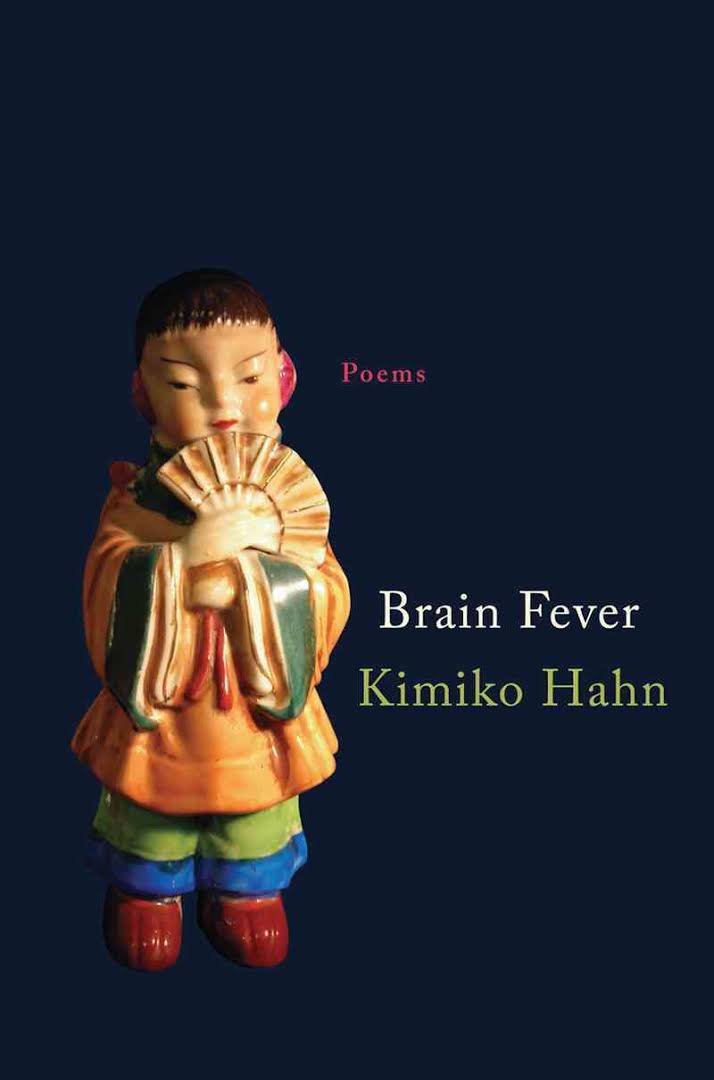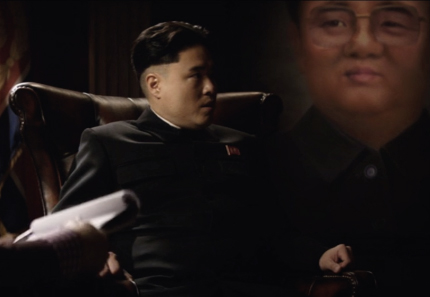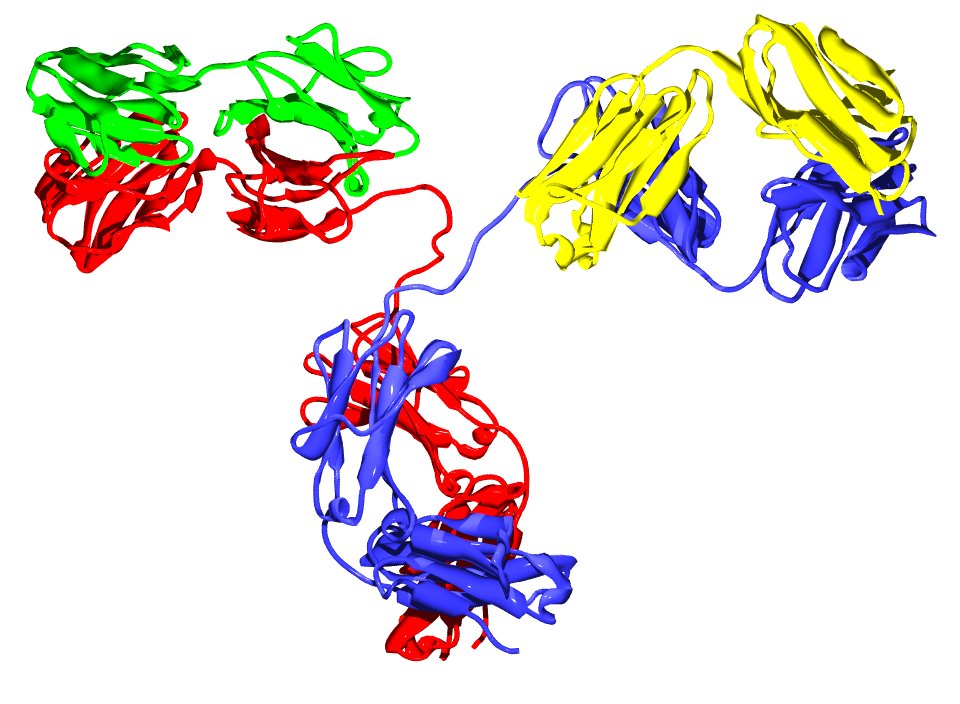Asian/American (Anti-)Bodies
Asian/American (Anti-)Bodies: An Introduction
"...how is it then that Asian American artists, authors, and performers keep scrutinizing their body parts?"
— Rachel C. Lee, The Exquisite Corpse of Asian America1
This series of articles for Contemporaries,2 announced by the admittedly punctuation-laden title "Asian/American (Anti-)Bodies,"3 presents a variety of approaches to figurations of the Asian-raced body in recent literary and cinematic texts: specifically, a non-metaphorical body as material embodiment of subjectivity rather than as object of discourse. The bodies readers will encounter in these articles are anthropomorphic and non-anthropomorphic, partial and whole, scaled to the micro and macro. But each in some way illustrates how racialized forms of "Asians" and "Asia" are produced through the material forces of global capitalism, biotechnology, foreign policy, and advances in neuroscience, as well as aesthetic forms meant to stabilize increasingly complex intersections of these forces. In contrast (though not in opposition) to the discursive theories of Asian American identity that currently dominate the field—offered by critics like Anne Anlin Cheng, Kandace Chuh, David Eng, Daniel Kim, and Colleen Lye—these articles attempt to resist what Rachel C. Lee has identified as the field's "anxiousness [over] biological embodiment."4 And thus they offer, each in their own way, a response to Lee's question in the epigraph.
The "anxiousness" Lee identifies has to do, I would argue, with the field's mainly implicit, but sometimes explicit, reliance upon the authentication of racial grievance by histories of bodily violence.5 A recent example of its explicit mode can be found in Asian American expressions of solidarity with protestors in Ferguson, Missouri, that acknowledge the strategic necessity of specifying that "Black Lives Matter" while at the same time enumerating cases of Asian Americans falling victim to police brutality and racial profiling.6 The difficulty that Asian Americans have faced when establishing racial grievance outside of the Asian American community (indeed, even within the community) has typically been attributed to the persistence of the "model minority myth." Perceived as successes in the economic and academic arenas, Asian Americans function in US racial discourse as proof of the nonexistence, or at least inconsequentiality, of racism. Since the codification of the model minority myth in the 1960s, and the birth of "Asian America" as a pan-ethnic strategic essentialism designed to combat both the myth and racist marginalization via Orientalism, Asian American racial grievance has been vulnerable to being perceived as an unnecessary anger that embitters otherwise privileged lives.7
One consequence of the field's anxiousness over the body is a kind of autoimmune reaction in which it becomes easy, even ethically imperative, to exclude subjects like model minorities and, say, political conservatives, who might claim an Asian American identity but do not conform to a resistant politics. Lacking a coherent history of bodies subjected to violence,8 Asian American studies has resorted to sustaining a field-justifying narrative of immigration exclusion that insufficiently accounts for our current period of immigration selection—a period emblematized by the 1965 Immigration and Nationality Act and its policies of professional selection.9
As erin Khuê Ninh observes in her book Ingratitude, Asian American refutations of the model minority typically rely on "trotting out [Asian America's] sub-par Southeast Asians, whose material deprivation is [the] only too-scant argument for the falseness of the model minority myth, and on whose continued failure must rest the hopes of entire academic and political platforms."10 While model minority mythologization requires ignorance or disavowal of Asian American failure, the Asian American "academic and political platforms" Ninh refers to are sustained by the reverse: a disavowal of model minorities as figures of deception that can only tell us what Asian America is not. In other words, a disavowal that involves not only the dismissal of a patently false sweeping generalization, but a strong reluctance to acknowledge that model minorities exist as empirical bodies in the Asian American community, or that model minority status is ever non-pathologically embraced, pursued, or valued. Further proof of this can be found in the fact that Asian American literary fiction has rarely produced non-ironic depictions of model minority characters.11
So we might ask: To what extent is the difficulty Asian American studies has faced in establishing racial grievance, and thus a coherent identity, a result of its failure to establish a link between racial grievance and the Asian-raced body subjected to violence? Rather than reaffirm this equation and its terms, and rather than abandon the body altogether, these articles imagine alternative equations by imagining alternative bodies and modes of racial embodiment. Moreover, our contributors—Ragini Tharoor Srinivasan, Andrew Leong, Michelle Huang, Sunny Xiang, Aimee Bahng, and myself—imagine different scales of the relationship between the Asian body and body politics that both coincide with standard conceptions of Asian America, and move beyond that categorization. We will encounter bodies at the systems, tissue, and molecular levels12: bodies violently devoured by capitalist desire in Asian American sites beyond US borders (Srinivasan), anthropomorphized Asian American auto bodies (Leong), bodies at the scale of the synapse (Huang), the face of the North Korean national horde-body (Xiang), clone bodies (Bahng), and reimaginings of the body politic at the scale of the antibody (Fan). Indeed, in the same way that antibodies, the microscopic proteins that tag and destroy invading antigens (e.g., viruses) by mirroring the shape of their receptors "like die and coin" (to quote Linus Pauling), are the precise sites at which the distinction between body and world is both confused and defined, these articles also blur boundaries—but in the service of defending and defining a (macro) body politic that is unimaginable at the (micro) scale of the antibody.13 A body politic that might or might not resolve as Asian American in a way that we recognize.
In light of recent events, namely the powerful reassertion of the black body subjected to violence as the central focus of discourses on racism in the US, this series represents an initial step towards thinking about how Asian American studies might build upon the gains of its ongoing poststructuralist phase by directly engaging with the non-metaphoricity of the body. Moreover, this series represents the briefest of pauses in the field's movement toward ever-more discursive methodologies, not as a repudiation of that movement, but as an attempt at yet again salvaging "Asian America" for political and intellectual projects—projects whose referents may not be clearly or unproblematically defined, but that show no sign of weakening, despite the increasing marginalization and neglect of Asian American studies and students in the American university. As the fastest-growing racial demographic in an America barreling towards the year 2042, when white Americans are projected to become a minority, Asian America isn't going anywhere, regardless of whether we are for or against the idea of an Asian American body. The mystery is the staying power of the Asian American body politic, and culture's role in sustaining it.
Christopher T. Fan is a PhD candidate in English at UC Berkeley, where he is completing a book titled American Techno-Orientalism: Speculative Fiction and the Rise of China. He is also a senior editor at Hyphen magazine, which he co-founded. His writing has appeared there, as well as at The New Inquiry and the Journal of Transnational American Studies. His article on Ted Chiang's science fiction has appeared here at Post45 in the Peer Reviewed section.
References
- Rachel C. Lee, The Exquisite Corpse of Asian America: Biopolitics, Biosociality, and Posthuman Ecologies (New York: New York University Press, 2015), 10.[⤒]
- I want to thank Sarah Chihaya for inviting me to curate this series, and for her enormous help in making it a reality. I also want to thank Ragini Tharoor Srinivasan for her feedback on this introduction.[⤒]
- The "solidus" between "Asian" and "American," according to David Palumbo-Liu who first placed it there, "marks both the distinction installed between 'Asian' and 'American' and a dynamic, unsettled, and inclusive movement." For the articles in this series, "Asian/American" and its cognates refers to historical transits and encounters between bodies and discourse: a transnational framework including, but not limited to, the territorial US. That said, following Palumbo-Liu's practice, I leave the solidus behind in the title of this introduction and intend it to be implied in subsequent appearances of the phrase "Asian American." The graphesis in the formulation "(Anti-)Bodies" is intended to suggest problematics of the body as central to understanding how "Asian/America" is both an "unsettled" and "inclusive" category. The trope of anti-bodies—those crucial components of the human immune system—will be addressed in more detail below. See Palumbo-Liu, Asian/American: Historical Crossings of a Racial Frontier (Stanford: Stanford University Press, 1999), 1.[⤒]
- Lee, 212. Lee's book, a major instigator for the ideas behind this series, offers the most important recent reassessment of the discursive turn in Asian American literary studies instantiated in studies such as Anne Anlin Cheng's The Melancholy of Race (New York: Oxford University Press, 2001); Kandace Chuh's Imagine Otherwise: On Asian Americanist Critique (Durham: Duke University Press, 2003); David Eng's Racial Castration: Managing Masculinity in Asian America (Durham: Duke University Press, 2001); Daniel Kim's Writing Manhood in Black and Yellow: Ralph Ellison, Frank Chin, and the Literary Politics of Identity (Stanford: Stanford University Press, 2005); and Colleen Lye, America's Asia: Racial Form and American Literature, 1893-1945 (Princeton: Princeton University Press, 2005). Lee's brief with the discursive turn is that it has vexed Asian American studies' relationship with a very specific form of embodiment "at the scale of the autonomous organism—from the skin boundaries of thinking subjects and humans" (261n18). Where her study then turns—and where I see this series, taken as a whole, allying with her project—is to the fascinating question of how "scalar shifts" in modes of embodiment, such as shifts to the organ- and micro-scale in the "biological tales of transplantation and tissue culture" that her book explores, invite us to "theorize [these shifts'] conceptual implications for thinking about ethics, relationality, and (bio)politics" within and beyond an Asian American frame (ibid). My contribution to this series, "Asian American Antibodies," will take up the question of scale in regard to the student-of-color movements that have been erupting on American campuses.[⤒]
- The premier study of the body in pain vis-à-vis Asian racial form is Eric Hayot's The Hypothetical Mandarin: Sympathy, Modernity, and Chinese Pain (New York: Oxford University Press, 2009). Although Hayot powerfully explores Asian American subject formation via the body in pain in his chapter on the figure of the coolie, "Chinese Bodies, Chinese Futures," his study does not engage the post-1965 cultural politics framing the ideas I am presenting here.[⤒]
- Jack Linshi's article for Time magazine, "Why Ferguson Should Matter to Asian-Americans," is exemplary of this rhetorical move. In another example, the powerful coherence of the pan-ethnic coalition that formed around the murder of Vincent Chin in 1982—which historians refer to as the first time that Asian America came together as a coherent identity—was due in part to the tragic non-metaphoricity of Chin's body and its racialization. Chin, an autoworker in Detroit, was publicly beaten to death in the middle of an intersection by Ronald Ebens and Michael Nitz, both autoworkers who mistook Chin for Japanese (he was Chinese) and blamed him for their lost jobs and the weakness of the US auto industry. Ebens and Nitz made Chin Japanese that night precisely through their physical violence. I owe this analysis to Takeo Rivera's "Vincent Chin's Wedding: Techno-Orientalism in the Age of Mechanical Racialization," Association for Asian American Studies Annual Meeting, San Francisco, Calif., 18 April 2014. Jumping further back in time, William Wei argues that the Asian American movement lost strength in the 1970s and was tokenized by both Third Worldist movements and the anti-war movement because of its small numbers, diversity, lack of charismatic national leaders, and lack of ideology (save for links to Maoism). We might also add that, in contrast to the Native American movement, which shared many of these features (small numbers and diversity), the Asian American movement could not establish its own link between racial grievance and the body under violence. William Wei, The Asian American Movement (Philadelphia: Temple University Press, 1993), 4-5.[⤒]
- This vulnerability has recently been exploited by Walter Benn Michaels' critique of Asian American fiction as furthering neoliberalism's interests by focusing on identity rather than class. See Michaels, "Model Minorities and the Minority Model—The Neoliberal Novel," in The Cambridge History of the American Novel, ed. Leonard Cassuto (New York: Cambridge University Press, 2011), 1016-30; and The Trouble with Diversity: How We Have Learned to Love Identity and Ignore Inequality (New York: Metropolitan Books, 2006).[⤒]
- The emphasis here being on "coherent." The problem facing Asian American claims to racial grievance is the fact of too many histories of bodily violence—from pogroms against the Chinese in the Pacific Northwest, to nuclear annihilation, to secret wars and weaponized dehumanization in Southeast Asia, just to name a few.[⤒]
- Two recent studies interrupt the field's longstanding aversion to the model minority: Madeline Hsu's The Good Immigrants: How the Yellow Peril Became the Model Minority (Princeton: Princeton University Press, 2015) and Ellen Wu's The Color of Success: Asian Americans and the Origins of the Model Minority (Princeton: Princeton University Press, 2014). Hayot comes close to making a similar point at one moment in The Hypothetical Mandarin when he writes in a footnote, referring to the post-1965 context: "to think about the history of Asian Americans as an instance of American race relations thus requires thinking about how the particular relation of Asian Americans to exemplarity itself constitutes part of the history that one wishes to address. One way to frame that address thematically is the idea of the 'model minority'" (27n42).[⤒]
- erin Khuê Ninh, Ingratitude: The Debt-Bound Daughter in Asian American Literature (New York: New York University Press, 2011), 61. Here, Ninh courageously extends the critique of Asian/American studies' ideological disingenuousness made by Viet Nguyen in his book Race and Resistance, which, like Ninh's study, is ultimately concerned with Asian American identity as a discursive formation. While Nguyen anchors his critique in readings of representations of the body as a means to an end, namely by tracking "Asian Americans and their collective relationship to both nation and capital," his selection of texts—all by authors who can claim a biological Asian racial identity—risks reinforcing a biological essentialism. What the articles in this series explore is how focusing on the body as a methodological end in itself might help to produce new referents for "Asian/America." See Nguyen, Race and Resistance: Literature and Politics in Asian America (New York: Oxford University Press, 2002), 17.[⤒]
- This is the case with Asian American literary fiction, though science fiction written by Asian Americans might offer a generic exception in the way it forges a formal rapprochement between post-1965 immigration selection and the professional/academic occupational segregation it has created in the Asian American community, thus offering space for model minority interiority ungoverned by the representational politics of Asian American literary fiction, which tends to focus on non-stereotypical depictions of Asian Americans. Examples include Charles Yu's How to Live Safely in a Science Fictional Universe (2010), Chang-rae Lee's On Such a Full Sea (2015), and Jennifer Phang's film Advantageous (2015). Susan Koshy offers an important reading of neoliberalism as facilitating the morphing of the model minority into the transnational "flexible citizen" (i.e., Aihwa Ong's figure of privileged neoliberal subjectivity via transnational arbitrage) in Jhumpa Lahiri's short story collection, Unaccustomed Earth. Indeed, the rare exceptions in literary fiction tend to be found in short fiction written by South Asians: Lahiri and Bharati Mukherjee in particular. See Koshy, "Neoliberal Family Matters," American Literary History 25.2 (Summer 2013): 344-80.[⤒]
- My thanks to Jenn Fang for helping me understand these distinctions.[⤒]
- Alberto Cambrosio, Daniel Jacobi, and Peter Keating, "Arguing with Images: Pauling's Theory of Antibody Formation," Representations 89 (Winter 2005): 97.[⤒]



